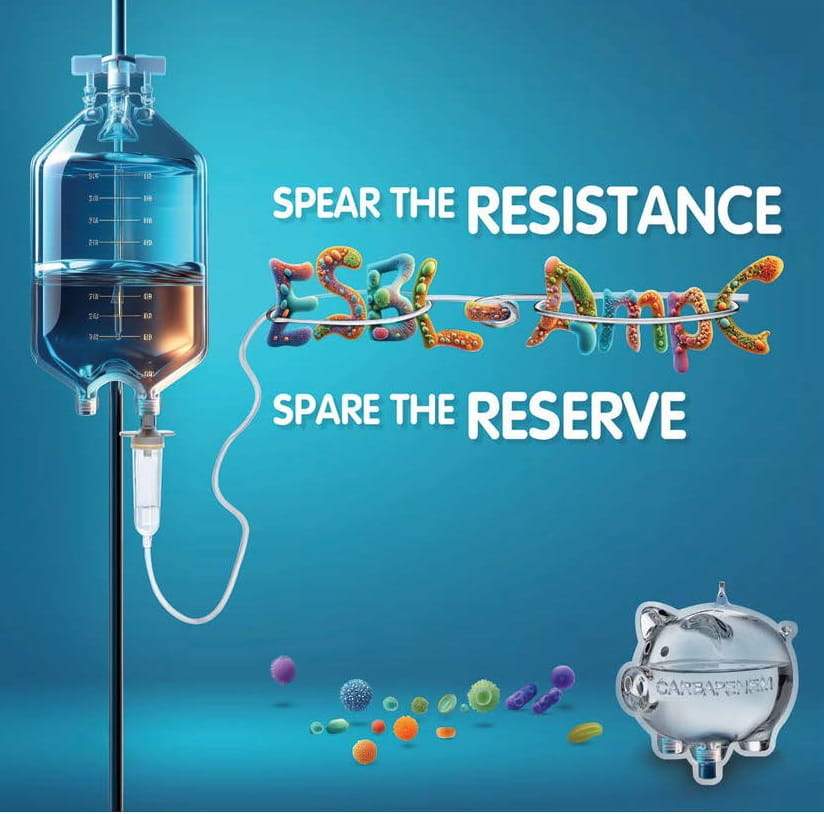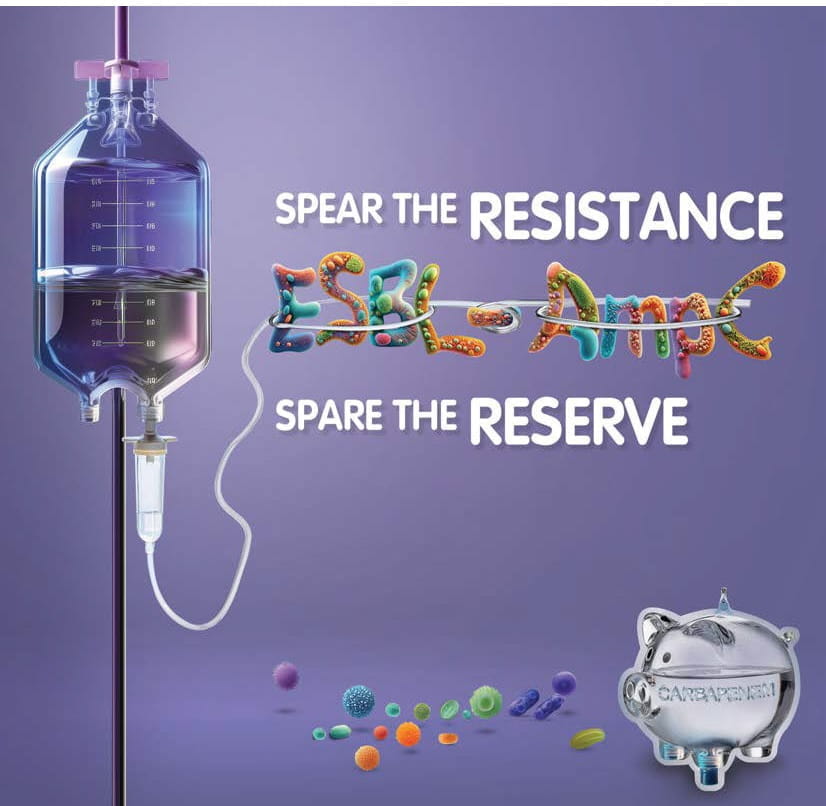New Drugs Against Gram-positive Bacteria – Mark Brönstrup
Resistant gram-positive pathogens are a major cause of infection-related mortality. Recent gram+ antibiotics are improved versions of the old ones, for example, tuberculosis (TB) regimen shortened with rifapentin/moxifloxacin and ceftobiprol as an alternative to daptomycin for S. aureus bacteremia. There is a large pipeline of drugs against mycobacteria, Clostridium difficile (C. difficile), non-traditional approaches and new scaffolds. Pipeline against Mycobacterium tuberculosis (M. tuberculosis) and NTM- there is a high number of innovative entries according to WHO criteria with a strong role of non-commercial organizations in developing these drugs. In the area of TB, development challenges exist for incorporating new agents into an already exiting complex regimen. BTZ043 is a new agent against M. Tuberculosis that inhibits DprE1, currently in phase II study. Novel treatment options have been developed against C. difficile where non-systemic exposure sufficiently treats this pathogen and thus hold low risk of systemic safety issues. Non-traditional, live biotherapeutic products approved as treatment options against C. difficile include RBX2660 which is a liquid suspension of screened donor fecal microbiota administered rectally for prevention of recurrence of C. difficile infection and SER-109 which contains purified firmicutes spores and is administered orally for prevention of recurrent C. difficile infection (rCDI) following standard-of-care antibiotics. Non-traditional inhibitors of bacterial toxins include bezlotoxumab, a monoclonal antibody, against toxin B of C. difficile for prevention of rCDI. Raxibacumab and obiltoxaximab are mABs for the prophylaxis and treatment of inhaled anthrax. These drugs address damage induced by the toxins and thus fall into the category of ‘pathoblocker’ and ‘virulence inhibitors’ ɑ-hemolysin (HIa) is a major virulence factor of S. aureus that kills immune cells, compromise host defenses, impairs endothelial and epithelial barrier integrity and destroys lung tissues. Phase 2 studies with monoclonal antibodies (mABs) have shown efficacy against HIa. Small molecule inhibitors of HIa have rapid and enhanced exposure to lung epithelial lining fluid and have lower cost. These compounds can restore monolayer integrity and inhibit degradation of adherent junctions. The efficacy of this molecule is proven in vivo in lung models for prophylaxis and treatment, both as standalone and in combination with linezolid. Traditional antibiotics with novel scaffold-the Fabl inhibitor afabicin specifically targets Staphylococci with extraordinary potency. This drug has a broader spectrum and is also active against a series of gram-negative pathogens. Bacterial gyrase/topoisomerase is a clinically validated target of fluroquinolones. Some next generation gyrase inhibitors are zoliflodacin and gepotidacin against N. gonorrhea, cystobactamids and albicidins. Synthetic cystobactamids break resistance against ciprofloxacin and colistin, showing broad spectrum potential. In conclusion, late-stage clinical pipeline against gram-positive ESKAPE pathogens features mostly improved versions of known antibiotics. However, there is a high level of innovation against single pathogens, like new drugs against M. tuberculosis and new approaches against C. difficile. There is innovation in the pre-clinical pipeline including new antibiotics and antivirulence targets and new sites on established targets.
New Drugs Against Gram-negative Bacteria – Ursula Theuretzbacher
Antibiotics approved against gram-negative bacteria in the last 5 years are: β-lactamase inhibitor (BLI) with carbapenem- vaborbactam+meropenem and relebactam+imipenem, tigecycline derivative- eravacycline, cephalosporine- cefiderocol. Most of these drugs are focused on Enterobacterales, while cefiderocol has a wide spectrum. The clinical pipeline of antibiotics is quite uniform with mainly BLI combinations. The potency of a new BLI to restore the activity of β-lactam antibiotic depends on several factors, including the ability of the antibiotic to hydrolysis of the β-lactamase, inhibitory potency of a BLI to a particular β-lactamase and its evolving variance, complementary inhibition of the β-lactam target, impact of other non-β-lactamase mediated resistant mechanisms, and co-production of various β-lactamases and different combination of resistant mechanisms. Carbapenem resistance (CR) rate varies in different geographical regions. Carbapenem resistant Enterobacterales (CRE) in Western Europe is much lesser than in Latin America and P. aeruginosa MDR rate is very high in Eastern Europe compared to Western Europe. The difference is even greater in enzymes. CRE in Western Europe is mainly by KPC, while Asia-Pacific region has a high number of metallo-beta-lactamase (MBL). Therefore, a drug optimized to KPC is essential in Western Europe but has less value in the Asia-Pacific region. Among the newer drugs, cefiderocol and cefepime-taniborbactam have increased rates of susceptibility (66% and 62%) to MBL-producing Enterobacterale. CR is associated with mechanisms like changes in the PBP3 target protein, deceased antibiotic uptake through porins, increased reflux, and increased expression of ampC gene. The new antibiotics in pipeline for CR Acinetobacter is sulbactam+durlobactam combination. Sulbactam has direct binding capacity to β-lactam target PBP1 and PBP3, but vulnerable to hydrolysis by OXA β-lactamases and MBLs; durobactam inhibits OXA enzymes typical for Acinetobacter. Another antibiotic for CR Acinetobacter is Rifabutin iv which is approved in TB as an oral drug. It has a different uptake mechanism for Acinetobacter and it has no resistance to other classes. Oral BLIs for complicated UTI are ceftibuten+ledaborbactam, ceftibuten+avibactam, ceftibuten+ETX0282. Some other drugs under trials are tebipenem (oral carbapenem), polymyxin class revival, and engineered AMPs. Preclinical pipeline for direct-acting antibacterials are DBOs (PBP2 inhibitors), new binding sites at ribosome, engineered gram-negative lysins, and synthetic antimicrobial peptides. Challenges of gram-negative drug discovery include penetration of drugs through cell wall avoiding efflux, insufficiently validated targets, inadequate chemical libraries, optimizing drug to desired spectrum, and risk of toxicity with high doses. Healthcare system challenges are a requirement for rapid diagnostics, safety concerns, and less information from clinical trials due to narrow indications. The new clinical pipelines lack new and functional classes of antibiotics, and the discovery pipelines might not lead to the needed new drug.
European Congress of Clinical Microbiology and Infectious Diseases (ECCMID) 2023, 15-18 April 2023, Copenhagen, Denmark

.svg?iar=0&updated=20230109065058&hash=B8F025B8AA9A24E727DBB30EAED272C8)


